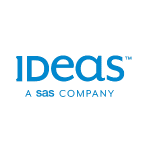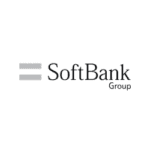
The volume of structured data being generated today is growing at an exponential rate. The reality for hoteliers and their revenue management teams is there are far too many data points to analyse. And certainly, too many decisions to be made for any human to undertake accurately, without the assistance of automated solutions.
Just how much data is being produced?
The “global data sphere” will increase from 36 zettabytes (ZB) used in 2018 to 163 ZB by 2025, according to a recent IDC Report. What does that actually mean? Well, imagine a rice grain is equal to 1 bit (B) of data. If we extrapolate that out, a bowl of rice contains approximately 1,024 grains of rice, which would be equal to 1 kilobyte (KB) of data. And further, 125,000 bowls of rice would be needed to represent one gigabit (GB) of data, or 125,000 KB. 1 trillion GB is equal to 1 ZB, which would be the equivalent of the Pacific Ocean filled with rice grains of data. So, next time you eat a bowl of rice, consider that as data continues to increase, we are looking at 163 Pacific Oceans filled with rice grains of data by 2025.
Where is all this data coming from? Essentially, everything collects data. From self-driving cars to the computer you carry in your pocket, our world is data. The emergence of platforms and applications are not immune to this trend, and within the hotel system space, the collection and use of data will be a key driver for major hotel business decisions going forward.
Which data supports better pricing decisions?
The data sources that support hotel pricing decisions commonly include stay history, inventory history, future reservations, future inventory, competitor pricing and future rate information. However, whilst it was once assumed more data leads to more informed decision-making, the focus is now on ensuring the right data is collected in the first place.
But what type of data is considered quality data for a hotel? In many cases, much of the “big data” that will help a hotel make more informed pricing decisions is demand associated data—data used in the creation and curation of accurate demand forecasts.
Meeting the connected customer’s demands
It is a hotelier’s role to understand the demand drivers of the traveller so they can proactively influence demand throughout the customer journey. This begins at the dreaming stage. A recent survey by Google found more than 57 percent of U.S. travellers feel brands should tailor their information based on personal preferences or past behaviours right from the beginning.
The real magic of staying in touch with customer demands happens when technology, and the data that drives it, put more power into consumers’ hands. An interesting use case of providing power to the consumer and its relationship to the customer experience is Disney’s MagicBand. The company provides an all-in-one wearable device on a colourful wristband. This wristband syncs with the traveller’s hotel room key, Fastpass, and even their park tickets. It also allows the customer to charge food and merchandise to their hotel room, alleviating the need for the customer to bring a wallet while on property. Princess Cruises and Carnival Cruise Line also introduced similar devices last year.
For the customer, these are simply a matter of convenience that has a definitive “cool” factor. But for the organisation, it provides a wealth of digital information on customer preferences that allows them to target customer needs, wants and desires in future encounters. It is not surprising to learn 69 percent of travellers are more loyal to a travel company that personalises their experiences online and offline.
The need for automation
Revenue managers must make any number of daily decisions and do it quickly. We have calculated there are more than 100 million daily revenue decisions, 52 million daily pricing decisions and 48 million daily overbooking decisions calculated by IDeaS’ revenue management systems alone. You can see that without the proper tools to help us understand this data, there is no way for any human to stay ahead of the sheer volume of incoming information.
In the age of big data, advanced analytics and real-time visualisation of clean data is critical. Any hotelier working without the support of an analytical revenue management system will find themselves overwhelmed by the complexity of the data. Forward-looking predictive analytics, embedded in today’s advanced revenue management systems, help hoteliers uncover emerging trends and identify opportunities to capture more revenue.
Advanced hotel revenue management analytics use data mining, machine learning and a variable deployment of complex predictive algorithms sets, to calculate optimal pricing and inventory decisions for hotels. Analytics assist hoteliers to move beyond their normal revenue management processes into harnessing their data and forecasting capabilities to explore, predict and optimise total revenue performance.
Best in class revenue management system analytics enable hoteliers to uncover granular patterns and trends at a micro-level. By determining why specific results are emerging, and if a hotel can expect them to continue, hoteliers can optimise their revenue opportunities today and into the future.





















